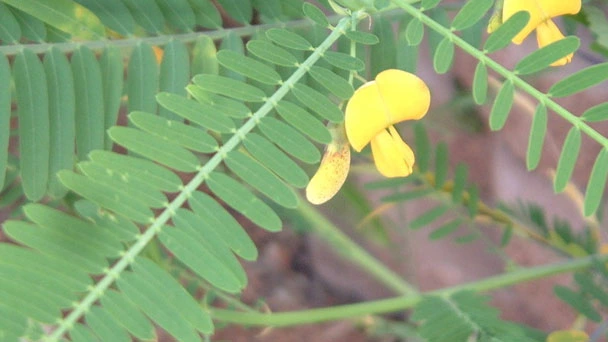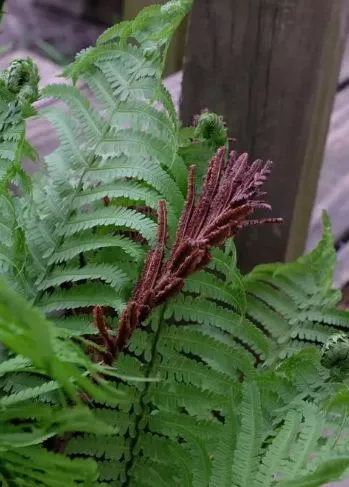What is a Flowering Fern - How to Grow & Take Care
Written by Ivy
Dec 13 2022

What is a flowering fern? The term refers to the hardy gloxinia fern (Incarvillea delavayi), which isn't actually a fern, but earns the nickname for its deeply divided, fern-like leaves. Hardy gloxinia ferns bloom from spring until late summer with pink, trumpet-shaped flowers, unlike true ferns. Flowering ferns can be difficult to grow, but the beauty of this traditional plant makes the extra work worthwhile. Don't forget that the hardy gloxinia fern can't stand very cold or very hot temperatures.
In USDA plant hardiness zones 5 through 7, as well as zone 10 if you can shield the plant from the sun's sweltering rays in the afternoons. Grow hardy gloxinia fern as an annual in colder climates. Continue reading to discover how to grow flowering ferns.
Hardy Gloxinia (Flowering Fern) Care
Work the soil to a depth of no less than 8 inches (20 cm) before planting hardy gloxinia fern in rich, well-drained soil.) to accommodate the long taproot. Put a lot of manure or compost in the ground before planting if your soil is poor. You can grow flowering ferns from seeds or by transplanting small starter plants purchased from a nursery or greenhouse. Please allow 24 inches (61 cm) because plants spread.) between each. Gloxinia is a hardy plant that does well in direct sunlight; however, in hot climates, place the plant in afternoon shade. Flowering ferns must be grown in well-drained soil. Hardy gloxinia should be planted in raised beds or containers if the soil is wet. Water hardy gloxinia frequently to maintain a light, never soggy, moisture in the soil. During the winter, use little to no water.
How to Propagate Hardy Gloxinias (Flowering Fern) from Seed
Hardy gloxinia plants have long taproots, making it a little challenging to divide them, but if necessary, they can be carefully divided in the spring, right after flowering. Offsets that grow from the plant's base can be cut off and used as softwood cuttings.
Hardy Gloxinia seeds need light to germinate, so do not cover them! For germination in late spring and blooms the following year, seeds may be sown directly in the garden in late fall or early spring. Anytime is a good time to sow seeds indoors, as long as the growing medium is kept between 55 and 65 degrees. It takes 25 to 30 days for germination.

Growing Requirements for Hardy Gloxinia Plants (Flowering Fern)
In USDA zones 6 through 10, Incarvillea delavayi plants can survive. Hardy gloxinias should have adequate drainage, be grown in raised planting beds or containers, and be brought indoors in the fall. They can also be dug up after the first frost and stored in dry peat moss in a cool, dry location throughout the winter.
Make sure to deeply till the soil and fill the planting hole with compost because these plants grow a big, fleshy tap root. Sandy, well-draining, and slightly acidic soil are ideal.
Hardy Gloxinias should be grown where they will receive full sun in the morning and partial shade in the hot afternoon. Plant your Hardy Gloxinas 12"-15" apart, with the crown of plant just below the soil surface. Throughout the growing season, provide abundant and regular watering.
Applying a thick layer of mulch in colder climates in the fall is advised; however, in the spring, it should be removed as soon as the threat of frost has passed.
For a longer blooming season, regularly deadhead spent flowers.
Prevent snails and slugs from damaging young growth. Grow your Hardy Gloxinia indoors where it will get full sun all day and cool, 60 degree temperatures at night.
Latest Updated
- Benefits of Bugleweed - 7 Science-backed Health Benefits
- Bugleweed Dangers & Side Effects - Is It Poisonous?
- How to Plant Evergreen Trees - What You Should Know
- When to Plant Evergreens - Grow Guide for Evergreen Trees
- 12 Wonderful Evergreen Shrubs for Your Garden
- 12 Popular Evergreen Plants with Pictures for Beginners
- When And How To Prune A Lilac Bush Like a Pro
- How to Grow & Care for Lilac Vine (Hardenbergia Violacea)
- Japanese Lilac Tree (Syringa Reticulata) Care & Propagation Guide
- Shumard Oak Pros and Cons - What to Know
Popular Articles
- Winter maintenance of Antirrhinum Majus
- How to Grow Terminalia Mantaly Tree
- How to Grow and Care for Crossostephium Chinense
- How to grow Antirrhinum Majus in spring
- Peristeria Elata (Dove Orchid) Profile: Info & Care Guide
- Underwatered Snake Plant (Sansevieria Trifasciata) - Signs And How To Fix
- How to Care for Brazilian Jasmine Plant (Mandevilla Sanderi)
- How to Grow & Care for Graptopetalum Purple Delight in Summer
- Rosa Chinensis (China Rose): Plant Growing & Care Tips
- How to Care for Baby Sun Rose (Aptenia Cordifolia)